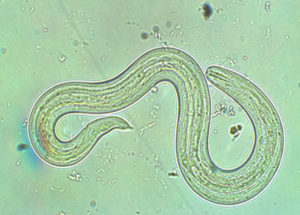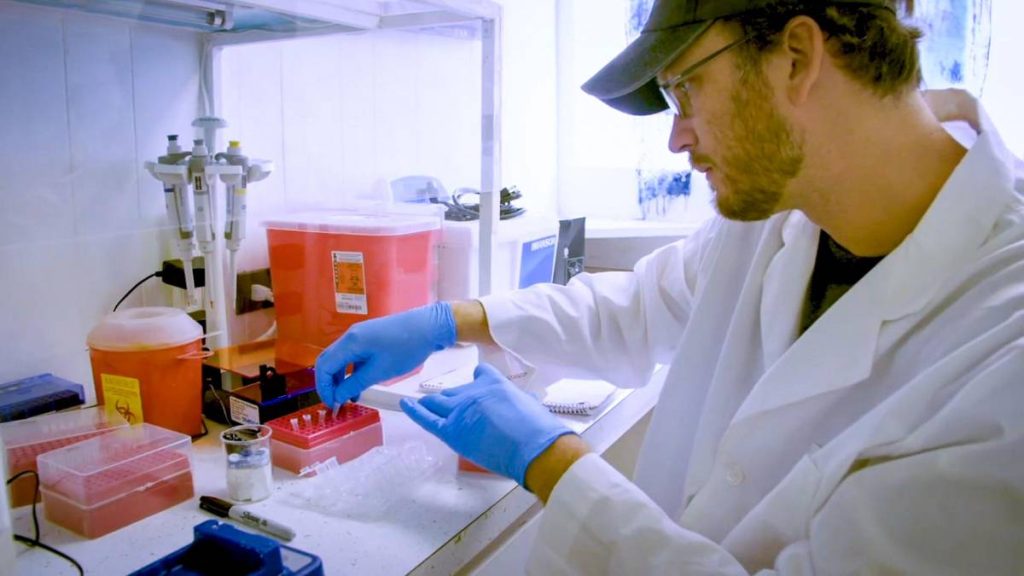DOH Rat Lungworm Disease Meeting Set for April 22

The rat lungworm parasite under a microscope. PC: Dr. Susan Jarvi
The Hawai‘i Department of Health will host an informational meeting about rat lungworm disease on Monday, April 22, 2019, at the North Kohala Public Library (54-3645 Akoni Pule Highway in Kapa‘au) from 6 to 7:30 p.m.
Those interested in learning more about angiostrongyliasis, commonly known as rat lungworm disease, and how to prevent its spread are encouraged to attend.
DOH public health experts are bringing together local partners to educate attendees about key information they should know to protect themselves from rat lungworm disease. Partners will offer presentations as follows:
- Hawai‘i Department of Health: Disease information and prevention
- Hawai‘i Department of Agriculture (HDOA): Pest control for growers and gardeners
- University of Hawai‘i (UH) at Hilo Daniel K. Inouye College of Pharmacy: Update on research efforts
- Big Island Invasive Species Committee: Recent semi-slug findings
- Governor’s Joint Task Force on Rat Lungworm Disease/UH-John A. Burns School of Medicine: Preliminary clinical guidelines on diagnosis and treatment of angiostrongyliasis
So far in 2019, there have been two confirmed cases of rat lungworm disease. Both individuals are Hawai‘i County residents and one of them is from the North Kohala area. The Big Island Invasive Species Committee announced earlier this year that Kohala Middle School students recently confirmed the presence of Parmarion martensi, commonly known as the semi-slug, as part of a citizen science program developed by UH Hilo’s Daniel K. Inouye College of Pharmacy and supported by DOH. Semi-slugs are invasive to Hawai‘i and very effective carriers of the parasite that causes rat lungworm disease: Angiostrongylus cantonensis (A. cantonensis).
For the latest updates about the upcoming informational meeting, visit the Hawai‘i Public State Library System website. All programs are subject to change and space at the venue is limited. If you require an auxiliary aid or accommodation due to a disability, contact the library before the program date at (808) 889-6655.
DOH provides the following recommendations to prevent rat lungworm disease:
- Wash all fruits and vegetables under clean, running water to remove any tiny slugs or snails. Pay close attention to leafy greens.
- Inspect, wash and store produce in sealed containers, regardless of whether it came from a local retailer, farmer’s market, or backyard garden.
- Control snail, slug, and rat populations around homes, gardens and farms. Get rid of these vectors safely by clearing debris where they might live, and also using traps and baits.
- Always wear gloves for safety when working outdoors.
For more information about rat lungworm disease and how to prevent its spread, visit:
Angiostrongyliasis, commonly known as rat lungworm disease, is caused by a parasitic roundworm and can have debilitating effects on an infected person’s brain and spinal cord. In Hawai‘i, most people become ill by accidentally ingesting a snail or slug infected with the parasite Angiostrongylus cantonensis (A. cantonensis). Symptoms vary widely between cases, and the most common ones include severe headaches and neck stiffness. The most serious cases experience neurological problems, severe pain and long-term disability.















